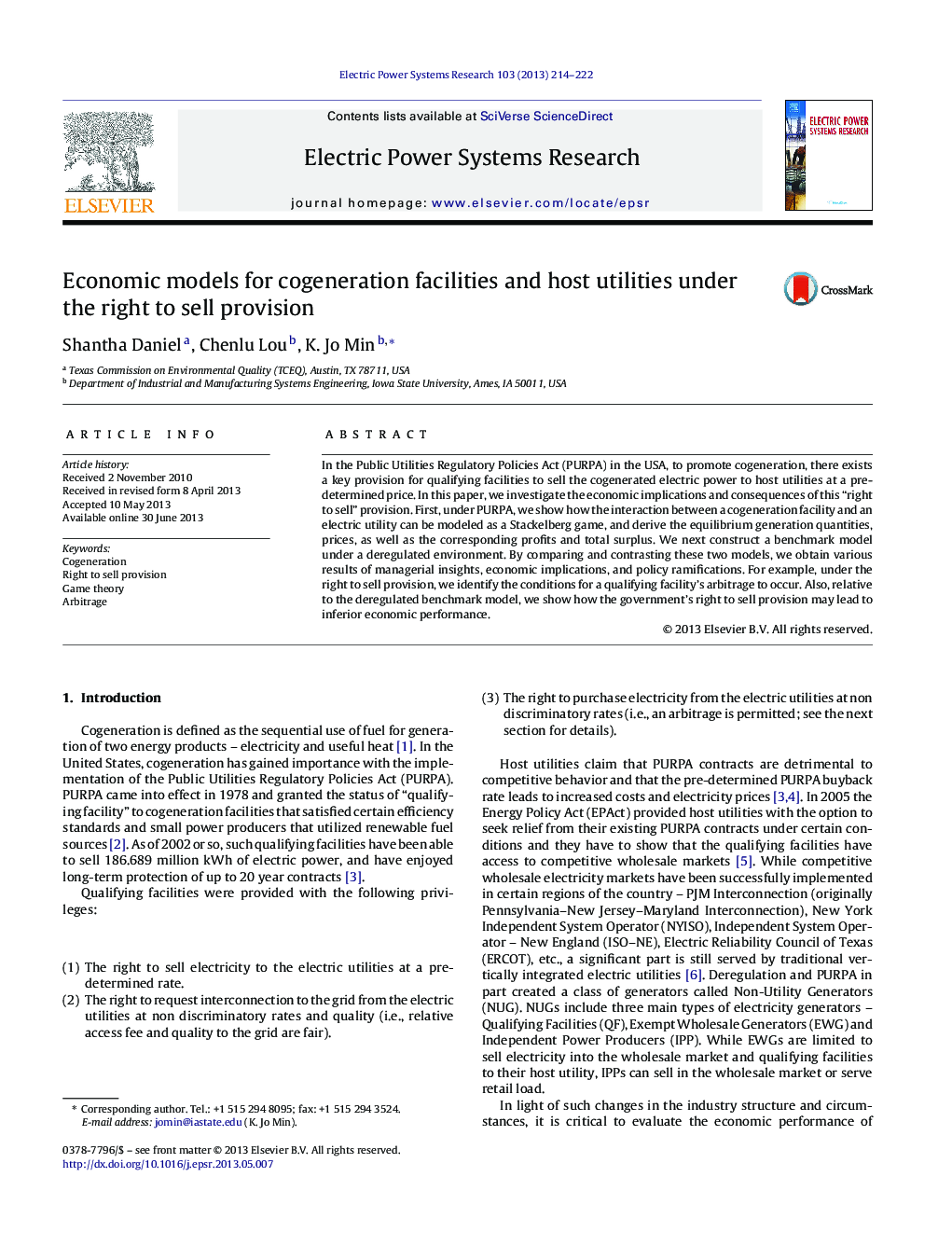| Article ID | Journal | Published Year | Pages | File Type |
|---|---|---|---|---|
| 703842 | Electric Power Systems Research | 2013 | 9 Pages |
•We construct and analyze two equilibrium models consisting of a cogeneration facility and a host utility.•Conditions under which an arbitrage by the cogeneration facility occurs are explicitly derived.•We compare and contrast the models for managerial insights and economic implications.•Policy ramifications for cogeneration facilities and host utilities are provided.
In the Public Utilities Regulatory Policies Act (PURPA) in the USA, to promote cogeneration, there exists a key provision for qualifying facilities to sell the cogenerated electric power to host utilities at a pre-determined price. In this paper, we investigate the economic implications and consequences of this “right to sell” provision. First, under PURPA, we show how the interaction between a cogeneration facility and an electric utility can be modeled as a Stackelberg game, and derive the equilibrium generation quantities, prices, as well as the corresponding profits and total surplus. We next construct a benchmark model under a deregulated environment. By comparing and contrasting these two models, we obtain various results of managerial insights, economic implications, and policy ramifications. For example, under the right to sell provision, we identify the conditions for a qualifying facility's arbitrage to occur. Also, relative to the deregulated benchmark model, we show how the government's right to sell provision may lead to inferior economic performance.
